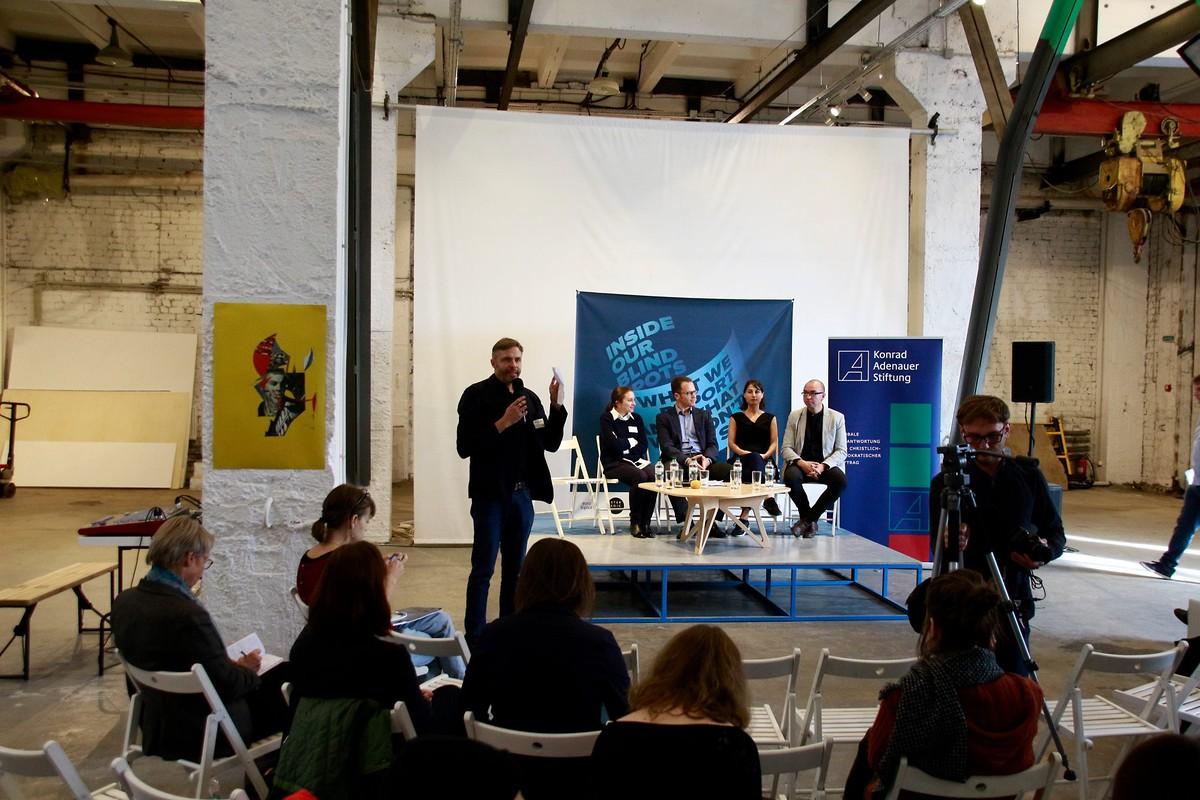Mechanisms of propaganda: from fake news to filter bubbles - Media Programme Southeast Europe
Event Reports
A panel discussion on the 7th of October 2017, hosted by the KAS Media Program South East Europe, was held under the title "Clouded vision: A closer look at the mechanics of propaganda". Its aim was to discuss different types of propaganda and disinformation and the threat they present to young democracies and countries in transition. The discussion was moderated by Christian Spahr, Head of KAS Media Program South East Europe.
"Many Eastern European states have to make fundamental decision: whether they want more or less EU integration, whether they are pro-Western or pro-Kremlin", Christian Spahr opened the discussion. "Reliable media are vital for this kind of opinion- and decision-making."
During the panel Galyna Schimansky-Geier, Editor for the German section of "StopFake.org", described the power of fake news as one instrument of propaganda. According to her, the purpose of massive fake news is to weaken trust in democracy. The main danger of fake news is not that people actually believe in fake news, but that they lose trust in media in general: "Propagandists make people believe that all news is fake". She claimed that the best way to oppose this threat is increased dialogue with the citizens.
Another Ukrainian expert, Volodymyr Yermolenko, Director of Internews Ukraine, underlined that not all propaganda and disinformation is based on false facts. Sometimes there is a true or partially true core to their content which makes a real analysis of the discourse all the more important in order to respond accordingly and offer alternative perspectives.
Similar mechanisms of propaganda can be found in Georgia, said Nino Gogolashvili, a journalist from Tbilisi who works for the Caucasus Centre of Civil Hearings. According to her, Georgia, which has confirmed its pro-Western attitude more than once, is frequently under the attack of Russian propaganda and disinformation. As a result, the Georgian government restricted the broadcasting of Russian TV stations in 2008. However, Russian TV channels found ways to influence Georgia’s TV landscape, targeting especially elderly people and citizens with a Russian background.
The fourth panellist, Michał Kokot, Foreign Policy Editor for Gazeta Wyborcza in Poland, added another dimension of disinformation: the filter bubble. In his opinion, such a filter bubble has been created three years ago after the latest change of government. Kokot explained how a mixture of historical narratives, propaganda and other forms of influencing media created an information bubble largely controlled by the government.
The panel showed that there are similar challenges in the media sectors of Ukraine and other Eastern and Central European countries. The whole conference served as a platform to discuss further ways to oppose disinformation, share experiences and work out best practices.
Author: Kristin Puschmann, KAS Media Program South East Europe



